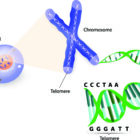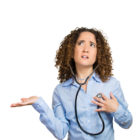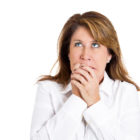To get an idea of how many people are struggling with bladder control, walk in any drug store. More adult absorption pads such as Depends are sold each year than disposable baby diapers. Urinary tract problems are a major problem for the American population and one of the most embarrassing aspects of aging. That’s why most women wait 5 to 7 years to tell their doctor they are having a problem. Men with an enlarged prostate gland, (which up to 50% do after age 50) or who have had surgery to treat prostate cancer may also lose their urine. But the involuntary loss of urine (incontinence) is definitely a problem that women are much more likely to suffer from than men.
Half of all menopausal women will have at least some urine loss and 25% will need surgery to correct incontinence. That is because the urethra – the tube that carries urine from our bladder out of the body – is much shorter in women than it is in men. Added to that fact is the wear and tear of childbirth, which can weaken the pelvic muscles and fascia, the canvas sheath that reinforces and additionally supports the urethra. That’s why women who have had children are more likely to have urine loss than those who have not.
Menopause also contributes to urinary tract problems because the lining of the urethra and the fascia and pelvic muscles that surround them are sensitive to estrogen and may weaken when estrogen levels decline. All of this can lead to leakage of urine.
There are several types of incontinence. One type is caused by the bladder muscles suddenly spasms which leads to a sudden, unstoppable urgency to urinate even if there isn’t much urine in the bladder. That’s called overactive bladder, and it can lead to urge incontinence. It’s often associated with frequency (urinating > 8 times/24hours) and getting up at night ≥ 2 times, which is called nocturia. Overactive bladder affects about 17% of women but it increases to over 50% after menopausal. Women with an overactive bladder may not be able to get to the toilet in time to prevent leakage, even though they tighten up all of their pelvic muscles, because they can’t control the bladder and keep it in. It may be common but it isn’t a normal part of aging.
Another type of incontinence is called stress incontinence and it is much more common. Menopause contributes to this problem, but stretching and tearing of the pelvic muscles during childbirth definitely sets the stage. The reduced muscle tone causes the urethra to sag. When pressure builds up in the abdomen from a cough, sneeze, laugh, jump or lift, your internal organs put pressure on your bladder and a small amount of urine may escape. That is what makes it such an incredible nuisance and so embarrassing – it can occur at any time.
Overflow incontinence is a another type of incontinence and it happens when more urine collects in the bladder than the bladder can hold. The excess urine leaks out. It can be caused by blockage of the urinary tract or nerve damage caused by conditions such as diabetes, stroke, or injury. It is also common in men who have an enlarged prostate gland.
Functional incontinence is not really a medical problem. It happens to people who can’t move quickly, who have eye problems or who suffer from confusion or memory loss. They simply can’t get to the bathroom in time. The North American Menopause Society’s Menopause Guidebook points out that infection of the bladder (cystitis), other medical conditions such as multiple sclerosis, certain prescription drugs such as diuretics and some tranquilizers, and smoking and eating spicy foods or artificial sweeteners, or drinking alcohol and caffeine can irritate the bladder and make incontinence worse.
If you are struggling with bladder control there are treatment options. Tune in next Wednesday for 8 options that can help you manage this issue.
Until next time,
Dr. Mache Seibel, Founder of My Menopause Magazine http://bit.ly/MyMenoMag
Professor, University of Massachusetts Medical School
(617) 916-1880
PS: Find more information of this type in My Menopause Magazine, available for the iPad in the Apple Newsstand. http://bit.ly/MyMenoMag
* Please Like and share with your friends.




